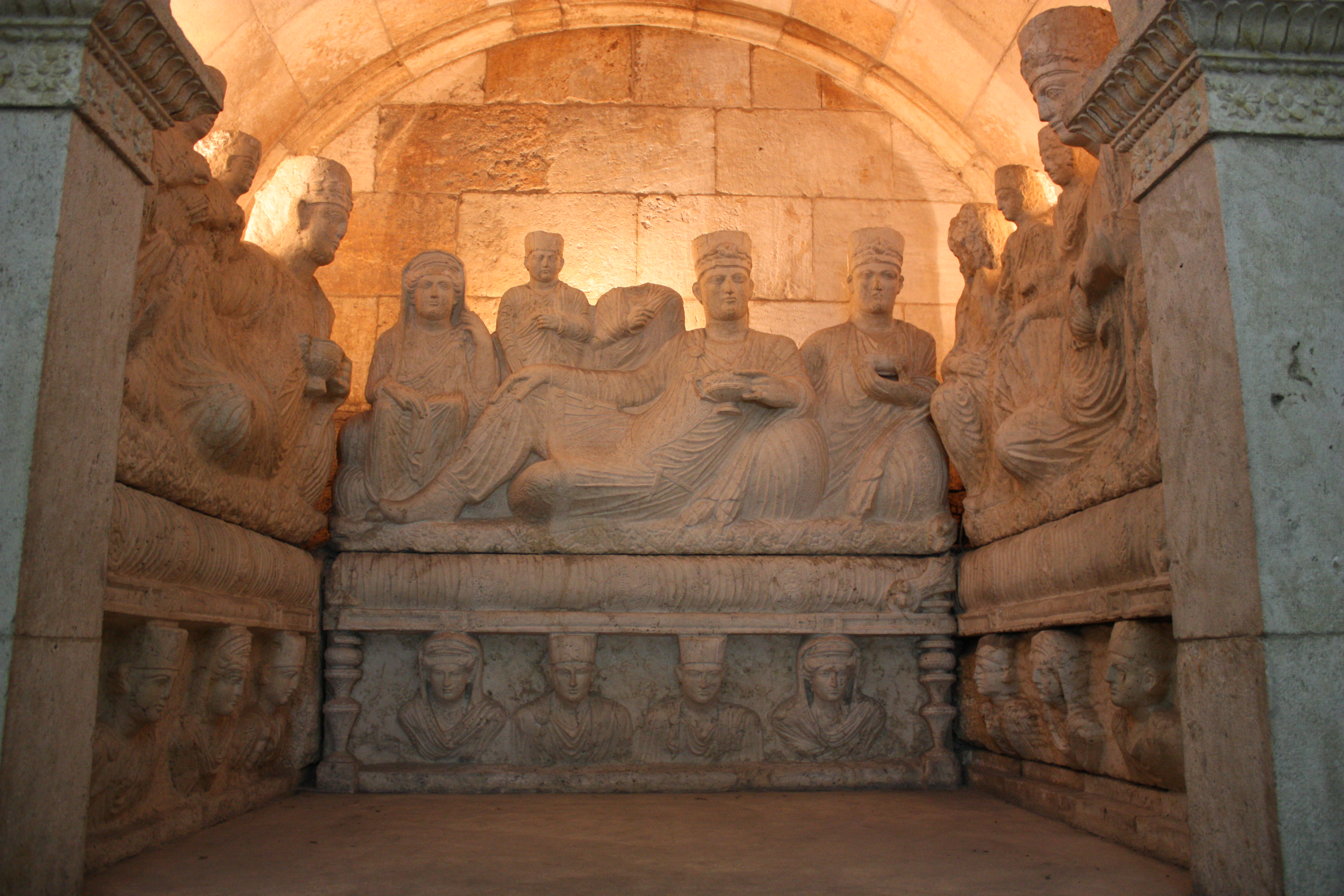hypogeum on:
[Wikipedia]
[Google]
[Amazon]





 A hypogeum or hypogaeum (plural hypogea or hypogaea, pronounced ; literally meaning "underground", from Greek ''hypo'' (under) and ''ghê'' (earth)) is an underground temple or
A hypogeum or hypogaeum (plural hypogea or hypogaea, pronounced ; literally meaning "underground", from Greek ''hypo'' (under) and ''ghê'' (earth)) is an underground temple or
Hypogeum of the Volumnis digital media archive
(





 A hypogeum or hypogaeum (plural hypogea or hypogaea, pronounced ; literally meaning "underground", from Greek ''hypo'' (under) and ''ghê'' (earth)) is an underground temple or
A hypogeum or hypogaeum (plural hypogea or hypogaea, pronounced ; literally meaning "underground", from Greek ''hypo'' (under) and ''ghê'' (earth)) is an underground temple or tomb
A tomb ( grc-gre, τύμβος ''tumbos'') is a repository for the remains of the dead. It is generally any structurally enclosed interment space or burial chamber, of varying sizes. Placing a corpse into a tomb can be called ''immuremen ...
.
Hypogea will often contain niches for cremated human remains or loculi for buried remains. Occasionally tombs of this type are referred to as built tombs.
The term ''hypogeum'' can also refer to any antique building or part of building built below ground such as the series of tunnels under the Colosseum which held slaves (particularly enemy captives) and animals while keeping them ready to fight in the gladiatorial games. The animals and slaves could be let up through trapdoors under the sand-covered arena at any time during a fight.
Examples
An early example of a hypogeum is found at the MinoanBronze Age
The Bronze Age is a historic period, lasting approximately from 3300 BC to 1200 BC, characterized by the use of bronze, the presence of writing in some areas, and other early features of urban civilization. The Bronze Age is the second prin ...
site of Knossos on Crete
Crete ( el, Κρήτη, translit=, Modern: , Ancient: ) is the largest and most populous of the Greek islands, the 88th largest island in the world and the fifth largest island in the Mediterranean Sea, after Sicily, Sardinia, Cypru ...
. Hogan notes this underground vault was of a beehive shape and cut into the soft rock. The Ħal Saflieni Hypogeum in Paola, Malta
Malta ( , , ), officially the Republic of Malta ( mt, Repubblika ta' Malta ), is an island country in the Mediterranean Sea. It consists of an archipelago, between Italy and Libya, and is often considered a part of Southern Europe. It lies ...
, is the oldest example of a prehistoric hypogeum, the earliest phase dating to 3600–3300 BC; it is a complex of underground chambers, halls and passages covering approximately on three levels, partly carved to imitate temple architecture and containing extensive prehistoric art. In Larnaka, Cyprus—the Lefkaritis Tomb was discovered in 1999.
Hypogea were also found in Dynastic Egypt, such as at the Northern Mazghuna pyramid, Southern Mazghuna pyramid and Southern South Saqqara pyramid. The hypogea in ancient Palmyra contained loculi closed with slabs bearing sculptured portrait reliefs, and sarcophagi with sculptured family banqueting scenes on their lids.
The later Christians built similar underground shrines, crypt
A crypt (from Latin ''crypta'' "vault") is a stone chamber beneath the floor of a church or other building. It typically contains coffins, sarcophagi, or religious relics.
Originally, crypts were typically found below the main apse of a chur ...
s and tombs, which they called catacombs
Catacombs are man-made subterranean passageways for religious practice. Any chamber used as a burial place is a catacomb, although the word is most commonly associated with the Roman Empire.
Etymology and history
The first place to be referred ...
. But this was only a difference in name, rather than purpose and rituals, and archaeological and historical research shows they were effectively the same. Werner Jacobsen wrote:
Hypogea were constructed across the pre-Columbian New World during the first millennium AD. Some of these tombs were over 10 meters in diameter and contained two or three free-standing columns, ornamental pilasters, and side chambers. The largest concentration of these hypogea are found in the National Archeological Park of Tierradentro, a UNESCO World Heritage Site in southwest Colombia.
Other subterranean constructions
Other excavated structures, not used for ritual purposes, include the Greco-Romancryptoporticus
In Ancient Roman architecture a cryptoporticus (from atin''crypta'' and ''porticus'') is a covered corridor or passageway. The usual English is "cryptoportico". The cryptoportico is a semi-subterranean gallery whose vaulting supports portico str ...
. Other cultures also have constructed underground structures, including the dugout, souterrain, yaodong
A yaodong () or "house cave" is a particular form of earth shelter dwelling common in the Loess Plateau in China's north. They are generally carved out of a hillside or excavated horizontally from a central "sunken courtyard".
The earth that sur ...
, fogou
A fogou or fougou (pronounced "foo-goo") is an underground, dry-stone structure found on Iron Age or Romano-British-defended settlement sites in Cornwall. The original purpose of a fogou is uncertain today. Colloquially called , , , giant holts ...
, erdstall
An erdstall is a type of tunnel found across Europe. They are of unknown origin but are believed to date from the Middle Ages. A variety of purposes have been theorized, including that they were used as escape routes or hiding places, but the m ...
, and kiva.
Notes
References
*External links
Hypogeum of the Volumnis digital media archive
(
creative commons
Creative Commons (CC) is an American non-profit organization and international network devoted to educational access and expanding the range of creative works available for others to build upon legally and to share. The organization has releas ...
-licensed photos, laser scans, panoramas), data from a University of Ferrara/CyArk
CyArk (from "cyber archive") is a 501(c)(3) nonprofit organization located in Oakland, California, United States founded in 2003. CyArk's mission is to "digitally record, archive and share the world's most significant cultural heritage and ensure ...
research partnership
{{Authority control
Subterranea (geography)